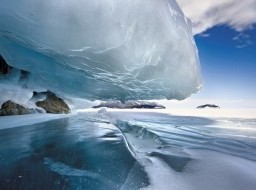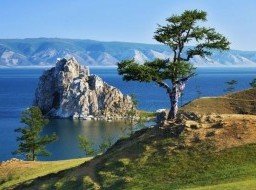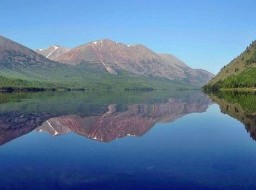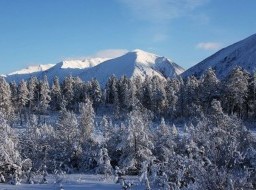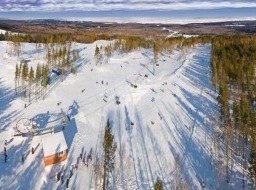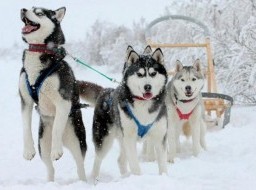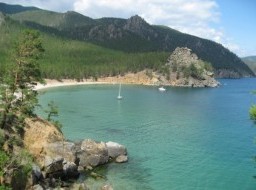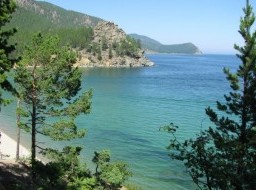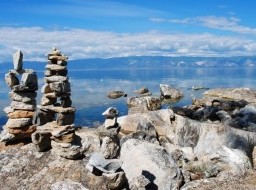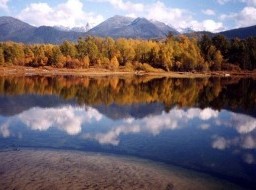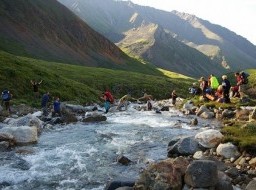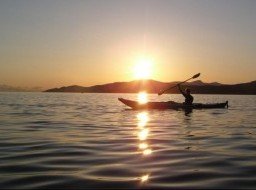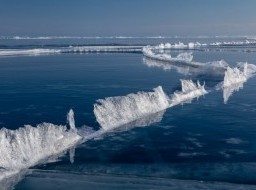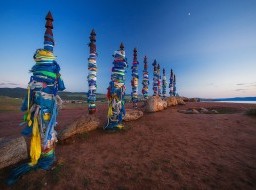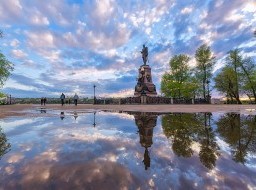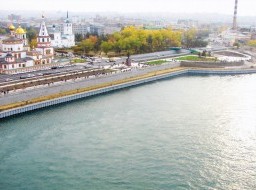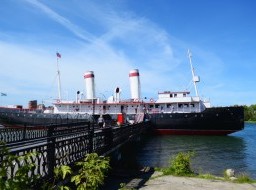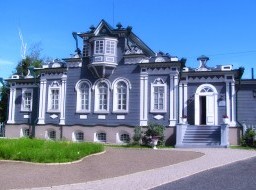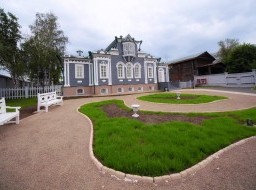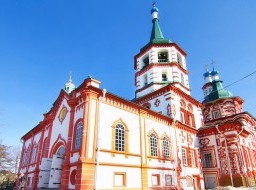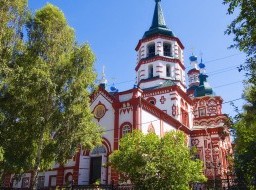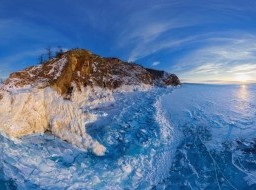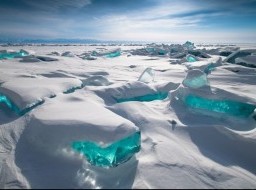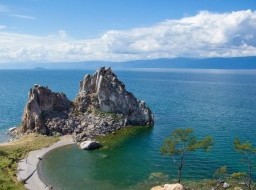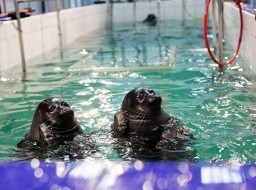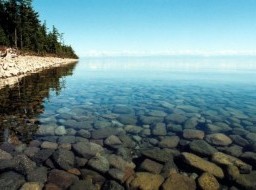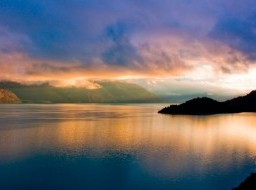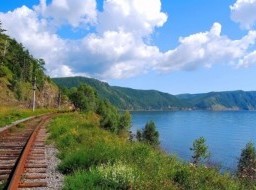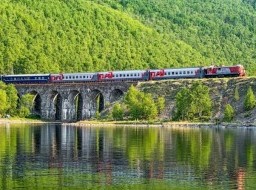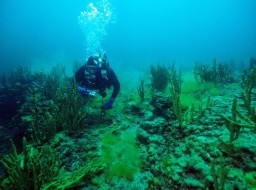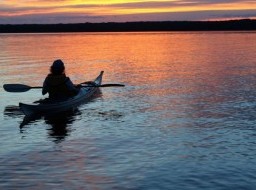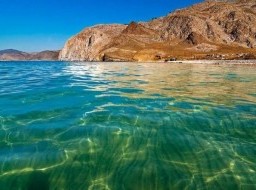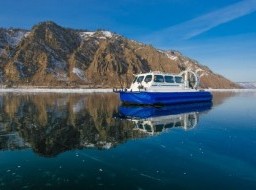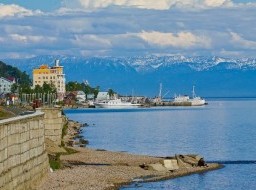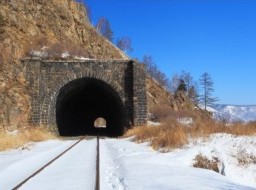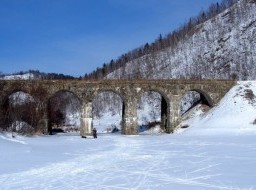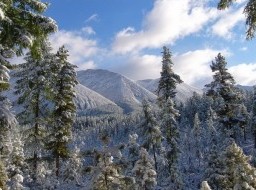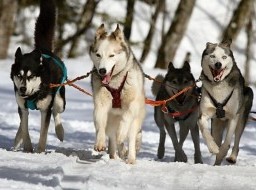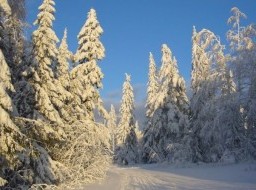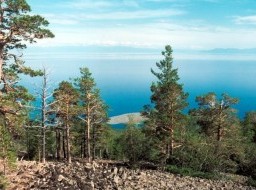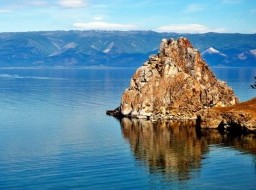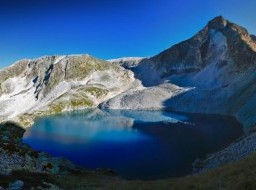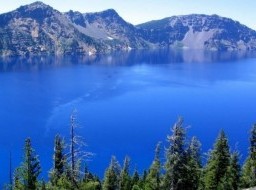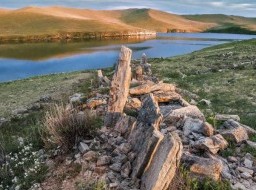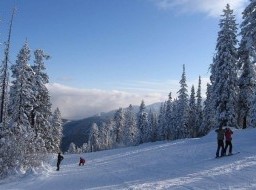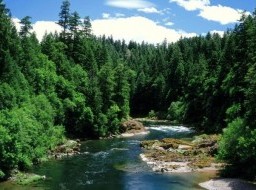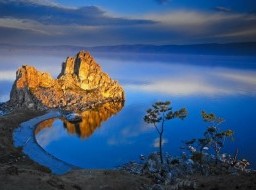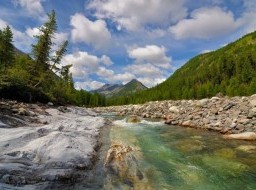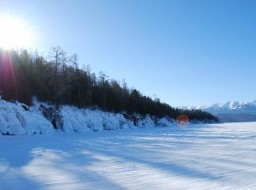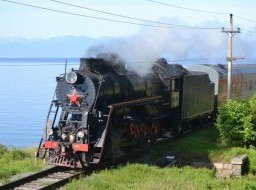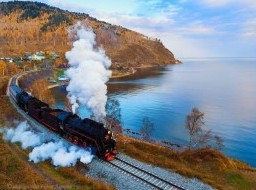Skriper Rock - a picturesque rocky cape on the western coast of Lake Baikal, about 7 kilometers north of the village of Bolshie Koty. From the village to Skriper, there is a mountain trail passing through the Senna Pass. The mountain massif of Scriper is composed of a rare breed on the Baikal - the Jurassic conglomerate, which is a sandy rock with a shingle of various sizes.
The Skriper is a rocky cape located on the west coast of the south of the Baikal region, four kilometers north of the village of Bolshie Koty. From the above mentioned point of the population to Skriper only 15 minutes of waterway or hour of a leisurely step, the road leads on a mountain path above the lake mirror.
The cliff is distinguished by non-standard forms of weathering for the Baikal lands, as well as the unusual nature of the rocks, of which the cape is woven. The walls of the rock, divided by deep and narrow gorges, are all the way over, and they also appear as cascades of rock, rise on the ridges of the ridges of mountains.
The Skriper's array consists of a species rare for Lake Baikal - the Jurassic conglomerate, sandy and rutted with a variety of gravel. This is a fairly fragile breed, rocks, folded to it, easily broken - an important detail for fans of rock climbing.
Beginning with the Hay Falls, the path directs a steep turn into the mountains, the ascent will be quite tiring. At 2 hundred above sea level in the rock, to reach which is problematic, there is a cave. Its wide portal is located opposite Lake Baikal, partially covered with splinter blocks from the above mentioned conglomerate. Skriper's mountain cave has two compact halls about 60 square meters in size, 6 and 8 meters long, and 3.5 and 4 meters wide, respectively.
In the depths of this cave were found traces of two cultures: the Iron Age and the Neolithic Age. At a depth of about 50 centimeters, in the lower layers were found stone tools, represented by arrowheads, knife-like plates, scrapers, as well as fragments of pottery with patterns on it, traces of fireplaces.
The locals say that earlier the cave was wider, and it was led by one more turn; Inside were human skeletons, and beside them lay iron arrows. This may indicate the appointment of a cave as a burial ground in the era of a new Iron Age.
Due to its location at the mountainous altitude, it was used as a watchdog. Ancient people gave signals in the form of smoke or fire from the site near the cave to the nearest settlements, an ordinary affair for the Turks.
In 1772, the cliff was called Chaiacha, toponym Skriper is more likely associated with the gold mine of the river valley of the Great Haypit 19 century. The right side of the depot is entirely strewn with fragments of recycled sand and gravel finder. In 1891, this place was washed over a million poods of rock, while obtaining 28 feet of gold, which is 12 kilograms.
Scraping machine was used for scraping and shipment of pebbles. For many years it was the main landmark, and after that the name was transferred to the whole massif. True, the a priori "scraper", which translated from the English language "scratch", was transformed into a Russian "scripter", meaning "creak".
Since 1985, Skriper is a state natural land-hold monument.
